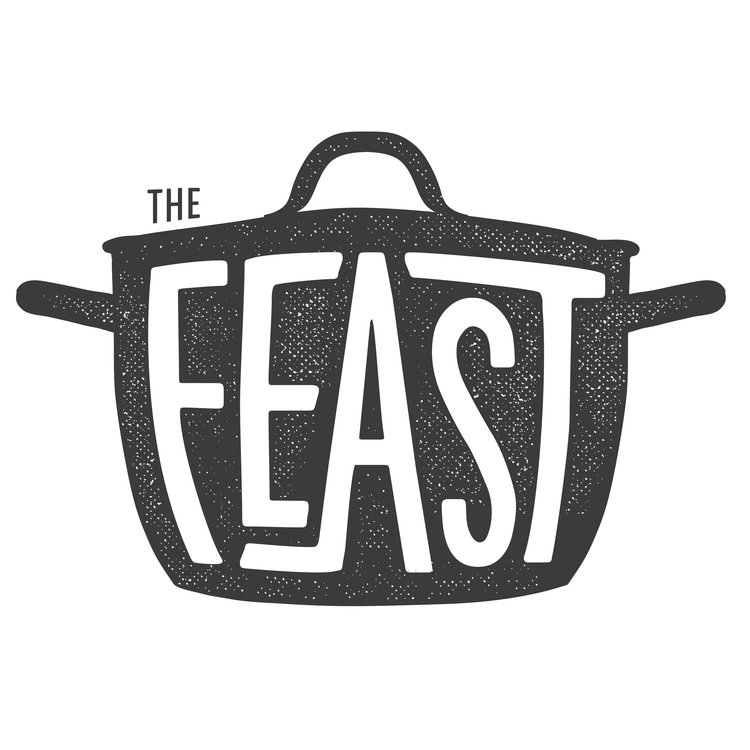Episode 17:
Maple Roosters and Tofu Tumults: A Han Dynasty Banquet
A banquet image from the Dahuting Tombs
This week, The Feast is bringing you a very special Canadian episode dedicated to Chinese New Year! We're exploring an opulent Han Dynasty banquet from the second century CE as the basis for our own Chinese New Year celebrations in Toronto. Join us as we search for the origins of tofu, find out the proper way to make a baijiu cocktail, & recite some foodie poetry from ancient China. All this & more rooster puns than you can shake a tail feather at on this week's episode of The Feast.
Written & Produced by Laura Carlson
Technical Direction by Mike Portt
Soundtrack by Looperman & Jahazzar
Find on iTunes | Find on Stitcher | RSS Link for Other Podcast Apps
A Map of the Dahuting Tombs
The location of the Dahuting Tombs
The Start of the Meal: Rice Wine for All!
The stone relief showing the opening scenes of an opulent Han banquet, including cups of rice wine for all guests. Courtesy of K.C. Chang, Food in Chinese Culture
A drawing of the opening banquet scene. A hostess greets her guests with wine. Courtesy of Rudolf Pfister, Institute for the History of Afro-Eurasian Life Sciences
A Modern Rice Wine Cocktail: The Maple Rooster
Without Han dynasty rice wine on our hands, we decided to go for a baijiu-based cocktail. Although baijiu cocktails seem to be few and far between in mixology books, we came up with our own variation on the Baijiu Collins, which we affectionately are calling the Maple Rooster. Please enjoy responsibly!
The Maple Rooster
Makes: One Drink
1 1/2 oz Baijiu
1/2 oz maple syrup
3/4 oz squeezed lime juice
3-4 dashes Angostura bitters
Soda water to top
Lime wheel for garnish
In a chilled highball glass, combine the first four ingredients. Top up the rest of the glass with soda water. Garnish with lime wheel.
Han Dynasty Kitchens: Keng & Other Dishes
A kitchen scene from the stone reliefs at Dahuting. The man in the lower left hand corner is thought to be making keng or geng, an early form of soups and stews. Courtesy of K.C. Chang, Food in Chinese Culture
A Modern Version of Keng? West Lake Soup
We tried our hand at what has been called the modern day successor to the original Kan Dynasty recipes for keng, a style of thick soup known as "West Lake". Named for a lake in eastern China, this popular soup around New Year's is thickened with cornstarch and often contains tofu as well as beef or pork. There are thousands of recipes online for variations of this popular soup, but we used this one from Chinese Sichuan Food as a base, swapping out the beef for pork.
Our own version of a modern-day keng, West Lake soup.
Other Delights of a Han Dynasty Kitchen
The stone relief of the Dahuting kitchens
A drawing of the kitchen scene from the east chamber of the Dahuting tombs, complete with roasting meats and open fires. Courtesy of Rudolf Pfister, Institute for the History of Afro-Eurasian Life Sciences
The Origins of Tofu?
A kitchen scene from the east chamber in M1 Dahuting. Scholars suggest the bottom scenes show the art of making tofu. Courtesy of Rudolf Pfister, Institute for the History of Afro-Eurasian Life Sciences
A close-up of the stone relief showing "tofu". Courtesy of Rudolf Pfister, Institute for the History of Afro-Eurasian Life Sciences
Should Chinese cuisine be recognized by UNESCO?
A great article by food culture professor, Zhou Hongcheng, on why China's absence from the "intangible cultural heritage" list might be a good thing...
Why UNESCO Should Turn Its Nose Up at Chinese Food (Sixth Tone)
Great Recent Books on Chinese Cuisine
Kian Lam Kho, Phoenix Claws and Jade Trees: Essential Techniques of Authentic Chinese Cooking (2015)
More on the History of Chinese Cuisine
Ying-shih Yu, Chinese History and Culture: Sixth Century B.C.E. to Seventeenth Century (Masters of Chinese Studies) (Volume 1) (2016)
H.T. Huang, Science and Civilisation in China: Volume 6, Biology and Biological Technology, Part 5, Fermentations and Food Science (2001)
K.C. Chang, ed. Food in Chinese Culture: Anthropological and Historical Perspectives (1977)














